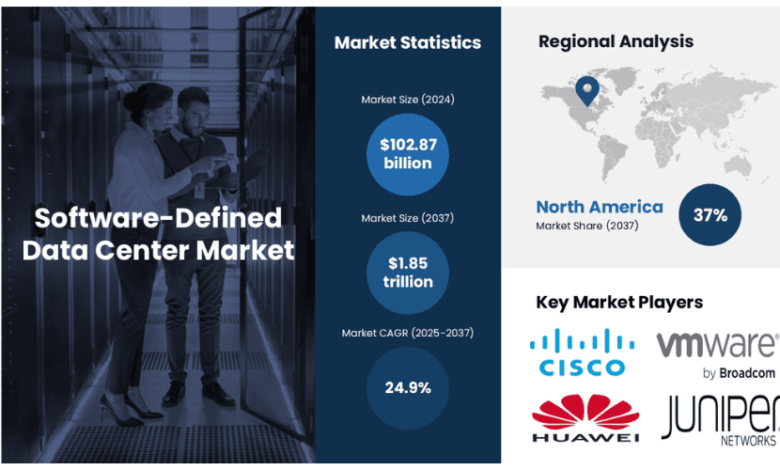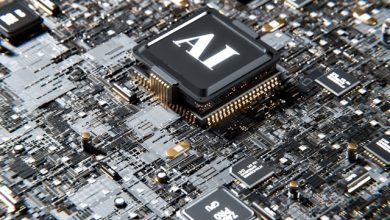
Over the last few years, there has been an accretion in demand for federal IT modernization. A survey done in January 2021 involving 300 federal IT leaders and mission stakeholders found that around 85% of the participants considered the COVID-19 crisis a turning point for government technology upgrades. A report published by World Economic Forum stated that by 2030, at least 25% of remote jobs, which is more than 90 million new job roles, will appear. This will instill the need to expand remote access capabilities.
To keep up with these fast changes, agencies are looking to use reliable cloud solutions and updated network systems that can make their IT more flexible and resilient. Software-Defined Networking, or SDN, is the one-stop solution for all these problems. In this blog we will understand why SDN is the most sought-after choice for amplifying performance, reliability, security, and management, while keeping costs under control.
Massive Shift Towards SDN – Why & How Industries Are Adopting SDN
Since the 2010s, SDN has been there in use, but now it has become indispensable for businesses. As companies are widening their applications and adapting digital infrastructure, SDN has become more crucial than ever to keep operations balanced. One striking example came from the Department of Veterans Affairs, which shared that around 479,000 employees, i.e., more than 20% of their employees, have telework arrangements as of February 2025. As remote job opportunities increase, the demand for dynamically handling network traffic is accelerating, which will uptick the SDN market to reach over USD 60.34 billion by 2030.
The real value of Software-Defined Networking (SDN) lies in cutting down the heavy effort it usually takes to manage networks. Instead of relying on scattered manual tasks, SDN uses a central controller that makes networks flexible, able to shift and scale quickly as business needs change.
So, what do businesses actually expect from SDN in practice?
- Providing clear visibility in the network and providing a service guarantee.
- Establishing or hindering traffic flows when required, like directing traffic to certain routes.
- Preparing the network to support new workloads and automatically making sure these workloads can talk to each other when needed.
- Cleaning up service-specific configurations once a service is retired and re-aligning the affected parts of the network without extra manual effort.
SDN is becoming more than just a tool now. It’s becoming a strategic asset for businesses to automate and streamline networks. Here are the industries that are most actively incorporating SDN in their operations.
1. Telecom & 5G Operators: SDN has certainly been very attractive to the communication service providers. For the practical application of next-generation telecom strategies, which include network slicing and edge computing, SDN is an integral component. A relevant mention is the recent initiatives of Thailand to become ASEAN’s digital hub, which indicates the urgency of SDN. More than USD 9.3 billion, or nearly 10% of the GDP of the nation, is invested to build this infrastructure by 2035, under its Industry 4.0 strategy.
2. Cloud & Data Centers: SDN provides control over diverse networks and powerful provisioning. Thus, various governments are taking various initiatives to adopt SDN to strengthen their data center operations. For instance, the National Data Centre Policy released in February 2025 by the Indian government is an initiative to strengthen the data center operation in India. With projected investments of more than ₹2.13 lakh crore by 2030, along with incentives designed to encourage balanced regional growth, this initiative is a blueprint to transform the digital infrastructure.
3. Finance & Banking: Banking and finance service providers are choosing SDN because it helps them to perform better in low latency and also to comply with updated norms. As the world banking is increasingly inclined towards digitization and mandates significant demand for programmable, segmented networks with auditability, capabilities where SDN outperforms, the demand for SDN rises.
4. Healthcare: Increasing demand for telemedicine and the rise of connected IoTs require agile network service and secure delivery. One of the significant instances of incorporating SDN in healthcare is the Indian government’s initiative named Ayushman Bharat Digital Mission. Under this initiative, the regulatory bodies invested 76 crores for creating Ayushman Bharat Health Accounts (ABHA) in April 2025. Moreover, the National Health Authority (NHA) teamed up with IIT Kanpur teamed up in 2024 to make an AI-enabled federated learning software for health outcomes and a financial incentive scheme (DHIS).
5. Manufacturing and Industry 4.0: Factories are becoming smarter by using IoT devices and bots to perform work, integrating SDN. 5G-PPP projects, involving 5G-MoNArch and 5G-TANGO, showcase SDN/NFV-based network slicing customized for smart cities and industrial use cases.
Thus, these uses show the multifaceted demand for SDN in various industries globally. By separating software from hardware, it offers the usage of cost-effective commodity hardware and the enhancement of the overall infrastructure.
SDN Being the Foundation for 5G Network and Edge Computing
By using next-gen strategies, SDN enables cost-effective and improved 5G and edge computing facilities. A survey shared in the National Institute of Health in 2021 shared, using SDN, NFV, and cloud architectures cut 5G rollout CAPEX by around 68%, OPEX by at least 63%, and total cost of ownership by nearly 69% compared to traditional setups. Today, there’s a growing push for smarter and more efficient ways to handle these networks. To overcome this problem, industries are inclining more towards SDN and achieving greater automation solutions.
SDN – the Key Enabler of Modern Network Infrastructure
Software-defined technology is not just a technology. It’s actually a tool that can help the business move ahead by providing an increasingly distributed digital landscape. For enterprises today, SDN brings real advantages by lowering costs, boosting network performance, strengthening security, and offering the flexibility businesses need to stay competitive.





